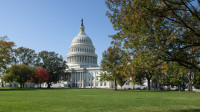
In this Article:
- What makes neoclassical economics outdated and harmful?
- How does Post-Keynesian economics reflect the real-world economy?
- What is Modern Monetary Theory, and why does it challenge debt myths?
- Which countries use effective economic strategies, and which don’t?
- How can modern economics address inequality, climate change, and public investment?
Why Modern Economists Politicians Keep Getting Money Wrong
by Robert Jennings, InnerSelf.com
When it comes to understanding how money and economies work, you’d think the people in charge—economists, politicians, central bankers—might have a clue. Unfortunately, most of them seem to operate on outdated theories that belong in the Smithsonian, right next to dinosaur bones and rotary phones. And the result? Policies that tank economies, hurt people, and leave us wondering if the real qualification for running a country is failing Econ 101. Let’s dig into why so much of modern economics is a mess and why post-Keynesian economics might just hold the answers.
The Great Myth of Neoclassical Economics
Let’s start with the reigning champion of bad ideas: neoclassical economics. This is the school of thought that treats the economy like a giant balancing act where everything magically works out if we just leave it alone. It’s the same logic that assumes people are perfectly rational and always make smart decisions—because, obviously, humans have a stellar track record of not messing things up (insert eye roll here).
Neoclassical economists operate under some lofty assumptions, starting with the belief that people are rational decision-makers. But let’s be real—have you ever witnessed the chaos of a Black Friday sale? Rationality seems to fly out the window when flat-screen TVs are 50% off. Then there’s their faith in self-regulating markets, as though unregulated banks and tech companies have always been paragons of responsibility. Finally, they cling to the idea that all debt is inherently bad, warning us that government borrowing will doom future generations. Yet somehow, despite decades of these dire predictions, the sky still hasn’t fallen.
This kind of thinking is why we keep hearing phrases like “tighten the belt,” “cut spending,” and “balance the budget.” It’s also why we get policies like austerity, privatization, and tax cuts for billionaires—all while the rest of us get potholes, crumbling schools, and a healthcare system held together with duct tape.
Why Neoclassical Economics Fails
Neoclassical economics doesn’t just fail in theory—it fails in reality. Real-world economies are messy, complex, and full of irrational humans who make bad decisions (hello, cryptocurrency). The neoclassical approach ignores all of that and instead clings to its tidy little models like they’re gospel.
Neoclassical economics is riddled with glaring problems, starting with its fundamental misunderstanding of government debt. Unlike your personal checking account, governments that issue their own currency don’t face the risk of running out of money. They’re not bound by the same constraints as households or businesses, yet this simple fact continues to elude many policymakers. Then there’s the naive belief in perfect markets. In reality, markets are anything but flawless—they crash, breed monopolies, and exhaust resources with reckless abandon. And let’s not forget the myth of rational decision-making. Humans, driven by emotions, biases, and, let’s face it, occasional stupidity, rarely act with the cool logic these theories assume. Together, these flaws create a shaky foundation for economic policies that often fail in the real world.
If you’ve ever wondered why economic policies seem disconnected from reality, this is why. Most decision-makers are operating in a world of make-believe, guided by theories that collapse the moment they meet real-world complexity.
Post-Keynesian Economics
Thankfully, not everyone is stuck in the economic Dark Ages. Post-Keynesian economics, inspired by John Maynard Keynes, offers a more realistic view of how economies actually work. Think of it as the antidote to all the nonsense we’ve been fed.
Post-Keynesian economists understand the economy in a way that actually reflects how it operates in the real world. First, they recognize that money isn’t some finite resource like a stash of gold bars locked away in a vault. Banks create money every time they issue a loan, and governments create money when they spend. It’s not about divvying up a fixed supply; it’s about creating and managing the flow of money.
They also emphasize that growth is fueled by demand. When people spend, invest, and participate in the economy, it thrives. Hoarding cash or cutting spending doesn’t create growth—it stifles it. Finally, post-Keynesians see government deficits for what they really are: tools, not threats. Running a deficit isn’t inherently harmful; what matters is how that money is used. If it’s invested in infrastructure, education, or renewable energy, it can generate long-term benefits for society. Instead of fearing deficits, post-Keynesians focus on using them wisely to build a better future.
Post-Keynesians look at the economy as a dynamic, evolving system. They understand that money isn’t just numbers on a ledger; it’s a tool that can be used to build roads, fund schools, and tackle big problems like climate change.
Modern Monetary Theory Myths
One of the most exciting offshoots of post-Keynesian economics is Modern Monetary Theory (MMT). MMT turns the traditional view of government debt on its head and asks a radical question: What if debt isn’t the problem we’ve been told it is?
The cornerstone of Modern Monetary Theory (MMT) is understanding how government finances actually work. For starters, governments that issue their own currency—like the U.S. and U.K.—can’t run out of money. Unlike households or businesses, they can always create more. This isn’t reckless; it’s simply the reality of a fiat currency system.
MMT also redefines the role of deficits. When a government spends more than it collects in taxes, it’s not creating a burden; it’s injecting money into the economy. That money funds infrastructure projects, strengthens healthcare systems, and creates jobs—laying the foundation for a more prosperous society.
The real constraint on government spending isn’t debt, but inflation. Problems arise only when demand outpaces the supply of goods and services, causing prices to rise. This means governments should focus on managing resources and inflation, not obsessing over arbitrary deficit numbers. It’s a framework that prioritizes practical outcomes over outdated myths.
So no, your grandkids aren’t going to be drowning in debt because the government funded a high-speed rail system. But they will suffer if we don’t invest in clean energy, healthcare, and education while we still can.
The Real-World Applications
What this all means for you, me, and everyone else trying to survive in 2025. Post-Keynesian economics isn’t just academic theory—it has real-world implications.
We’re facing a climate crisis that demands massive investment in renewable energy, infrastructure, and adaptation. Post-Keynesians argue that governments can and should create the money to fund these efforts. Inflation only becomes an issue if we run out of resources, not if we run up the national “credit card.”
Austerity measures have gutted public services and widened the gap between the rich and poor. By rejecting the fear of deficits, governments can invest in universal healthcare, education, and housing, giving everyone a fair shot at a decent life.
Which Countries Get It Right and Which Don't
When it comes to understanding modern economics, the world is divided into two camps: those that seem to grasp how money and economies actually work, and those stubbornly clinging to outdated myths that harm their citizens. Let’s take a closer look.
A few governments are breaking free from the neoclassical stranglehold and using money as a tool to improve lives and build a sustainable future.
-
Japan: Often misunderstood, Japan has run high levels of government debt for decades without collapsing into chaos. Why? Because it issues its debt in its own currency and focuses on keeping its economy stable rather than obsessing over deficits. Japan has shown that debt isn't a doomsday device—it's a lever for maintaining economic health.
-
Norway: With its sovereign wealth fund, Norway has demonstrated how public investment can create long-term prosperity. They use revenue from natural resources to fund public goods, proving that smart management of money can benefit everyone.
-
China: Love it or hate it, China has mastered the art of state-led investment. By leveraging public spending on infrastructure, technology, and industry, they’ve propelled their economy forward, even if some policies are questionable. They’re not afraid of deficits—they’re afraid of stagnation.
Unfortunately, many countries are stuck in the past, treating their economies like household checkbooks and making decisions that undermine long-term growth.
-
United Kingdom: Despite being a major global economy, the UK has doubled down on austerity and budget-balancing rhetoric. Leaders like Rachel Reeves seem more focused on keeping deficits low than on fixing crumbling infrastructure or addressing inequality. The result? Stagnant growth and rising discontent.
-
United States: While there’s some progress, the U.S. still can’t shake its obsession with "national debt" as a bogeyman. Politicians from both parties often paralyze the government with arguments about deficits while neglecting urgent needs like healthcare, climate change, and education.
-
Germany: As the poster child for fiscal conservatism in Europe, Germany’s "Schwarze Null" (Black Zero) policy—obsessive deficit avoidance—has weakened investment in public goods and held back the broader EU economy. It’s a masterclass in how not to manage a modern economy.
The countries still stuck in neoclassical thinking pay a heavy price. Austerity measures lead to underfunded healthcare, collapsing infrastructure, and a lack of resilience in the face of crises like pandemics or climate disasters. These nations cling to the myth that government debt is a greater threat than poverty or inequality, leaving millions of people worse off.
The countries that "get it" show us what’s possible: a world where public spending creates shared prosperity, governments focus on real resources rather than imaginary budget constraints, and policies prioritize people over profit. The choice is clear—either embrace a modern understanding of economics or stay shackled to the myths of the past, with all the suffering that entails.
Why This Matters
Here’s the bottom line: The economic theories that dominate policy today are holding us back. Neoclassical economics clings to the myth that debt is dangerous and markets are sacred, while the world around us crumbles. Post-Keynesian economics, with its emphasis on public investment, full employment, and sustainability, offers a way forward.
It’s time to stop listening to the economists who think money works like Monopoly cash and start building a future that works for everyone. Because let’s face it—if we’re going to tackle climate change, inequality, and all the other crises of our time, we need an economic framework that’s rooted in reality, not fantasy.
About the Author
 Robert Jennings is the co-publisher of InnerSelf.com, a platform dedicated to empowering individuals and fostering a more connected, equitable world. A veteran of the U.S. Marine Corps and the U.S. Army, Robert draws on his diverse life experiences, from working in real estate and construction to building InnerSelf with his wife, Marie T. Russell, to bring a practical, grounded perspective to life’s challenges. Founded in 1996, InnerSelf.com shares insights to help people make informed, meaningful choices for themselves and the planet. More than 30 years later, InnerSelf continues to inspire clarity and empowerment.
Robert Jennings is the co-publisher of InnerSelf.com, a platform dedicated to empowering individuals and fostering a more connected, equitable world. A veteran of the U.S. Marine Corps and the U.S. Army, Robert draws on his diverse life experiences, from working in real estate and construction to building InnerSelf with his wife, Marie T. Russell, to bring a practical, grounded perspective to life’s challenges. Founded in 1996, InnerSelf.com shares insights to help people make informed, meaningful choices for themselves and the planet. More than 30 years later, InnerSelf continues to inspire clarity and empowerment.
Creative Commons 4.0
This article is licensed under a Creative Commons Attribution-Share Alike 4.0 License. Attribute the author Robert Jennings, InnerSelf.com. Link back to the article This article originally appeared on InnerSelf.com
Recommended books:
Capital in the Twenty-First Century
by Thomas Piketty. (Translated by Arthur Goldhammer)
 In Capital in the Twenty-First Century, Thomas Piketty analyzes a unique collection of data from twenty countries, ranging as far back as the eighteenth century, to uncover key economic and social patterns. But economic trends are not acts of God. Political action has curbed dangerous inequalities in the past, says Thomas Piketty, and may do so again. A work of extraordinary ambition, originality, and rigor, Capital in the Twenty-First Century reorients our understanding of economic history and confronts us with sobering lessons for today. His findings will transform debate and set the agenda for the next generation of thought about wealth and inequality.
In Capital in the Twenty-First Century, Thomas Piketty analyzes a unique collection of data from twenty countries, ranging as far back as the eighteenth century, to uncover key economic and social patterns. But economic trends are not acts of God. Political action has curbed dangerous inequalities in the past, says Thomas Piketty, and may do so again. A work of extraordinary ambition, originality, and rigor, Capital in the Twenty-First Century reorients our understanding of economic history and confronts us with sobering lessons for today. His findings will transform debate and set the agenda for the next generation of thought about wealth and inequality.
Click here for more info and/or to order this book on Amazon.
Nature's Fortune: How Business and Society Thrive by Investing in Nature
by Mark R. Tercek and Jonathan S. Adams.
 What is nature worth? The answer to this question—which traditionally has been framed in environmental terms—is revolutionizing the way we do business. In Nature’s Fortune, Mark Tercek, CEO of The Nature Conservancy and former investment banker, and science writer Jonathan Adams argue that nature is not only the foundation of human well-being, but also the smartest commercial investment any business or government can make. The forests, floodplains, and oyster reefs often seen simply as raw materials or as obstacles to be cleared in the name of progress are, in fact as important to our future prosperity as technology or law or business innovation. Nature’s Fortune offers an essential guide to the world’s economic—and environmental—well-being.
What is nature worth? The answer to this question—which traditionally has been framed in environmental terms—is revolutionizing the way we do business. In Nature’s Fortune, Mark Tercek, CEO of The Nature Conservancy and former investment banker, and science writer Jonathan Adams argue that nature is not only the foundation of human well-being, but also the smartest commercial investment any business or government can make. The forests, floodplains, and oyster reefs often seen simply as raw materials or as obstacles to be cleared in the name of progress are, in fact as important to our future prosperity as technology or law or business innovation. Nature’s Fortune offers an essential guide to the world’s economic—and environmental—well-being.
Click here for more info and/or to order this book on Amazon.
Beyond Outrage: What has gone wrong with our economy and our democracy, and how to fix it -- by Robert B. Reich
 In this timely book, Robert B. Reich argues that nothing good happens in Washington unless citizens are energized and organized to make sure Washington acts in the public good. The first step is to see the big picture. Beyond Outrage connects the dots, showing why the increasing share of income and wealth going to the top has hobbled jobs and growth for everyone else, undermining our democracy; caused Americans to become increasingly cynical about public life; and turned many Americans against one another. He also explains why the proposals of the “regressive right” are dead wrong and provides a clear roadmap of what must be done instead. Here’s a plan for action for everyone who cares about the future of America.
In this timely book, Robert B. Reich argues that nothing good happens in Washington unless citizens are energized and organized to make sure Washington acts in the public good. The first step is to see the big picture. Beyond Outrage connects the dots, showing why the increasing share of income and wealth going to the top has hobbled jobs and growth for everyone else, undermining our democracy; caused Americans to become increasingly cynical about public life; and turned many Americans against one another. He also explains why the proposals of the “regressive right” are dead wrong and provides a clear roadmap of what must be done instead. Here’s a plan for action for everyone who cares about the future of America.
Click here for more info or to order this book on Amazon.
This Changes Everything: Occupy Wall Street and the 99% Movement
by Sarah van Gelder and staff of YES! Magazine.
 This Changes Everything shows how the Occupy movement is shifting the way people view themselves and the world, the kind of society they believe is possible, and their own involvement in creating a society that works for the 99% rather than just the 1%. Attempts to pigeonhole this decentralized, fast-evolving movement have led to confusion and misperception. In this volume, the editors of YES! Magazine bring together voices from inside and outside the protests to convey the issues, possibilities, and personalities associated with the Occupy Wall Street movement. This book features contributions from Naomi Klein, David Korten, Rebecca Solnit, Ralph Nader, and others, as well as Occupy activists who were there from the beginning.
This Changes Everything shows how the Occupy movement is shifting the way people view themselves and the world, the kind of society they believe is possible, and their own involvement in creating a society that works for the 99% rather than just the 1%. Attempts to pigeonhole this decentralized, fast-evolving movement have led to confusion and misperception. In this volume, the editors of YES! Magazine bring together voices from inside and outside the protests to convey the issues, possibilities, and personalities associated with the Occupy Wall Street movement. This book features contributions from Naomi Klein, David Korten, Rebecca Solnit, Ralph Nader, and others, as well as Occupy activists who were there from the beginning.
Click here for more info and/or to order this book on Amazon.
Article Recap
This article explores how outdated economic theories, like neoclassical economics, harm societies and hinder growth. It introduces Post-Keynesian economics and Modern Monetary Theory (MMT) as realistic frameworks for addressing government debt myths, inequality, and climate change. The article also highlights real-world examples of countries that embrace or reject modern economic strategies, showing the consequences of both approaches. Post-Keynesian thinking offers hope for sustainable growth and investment in the future.
Hashtags
#PostKeynesianEconomics #ModernMonetaryTheory #MMTExplained #DebtMyths #EconomicSustainability #PublicInvestment #ClimateEconomics #BetterGrowthModels








